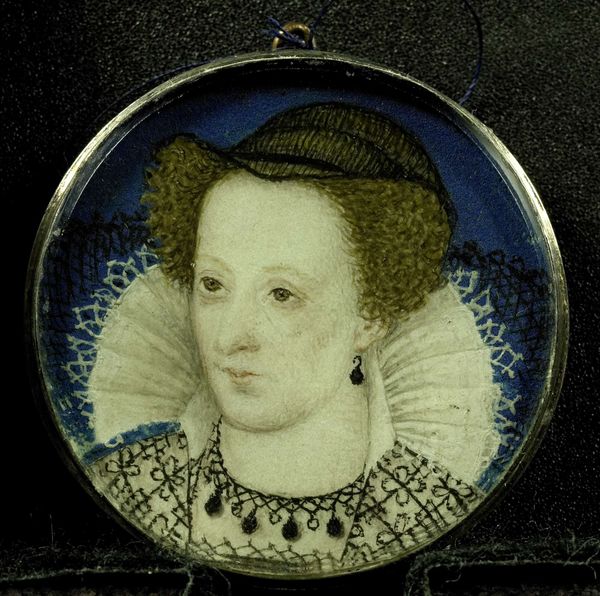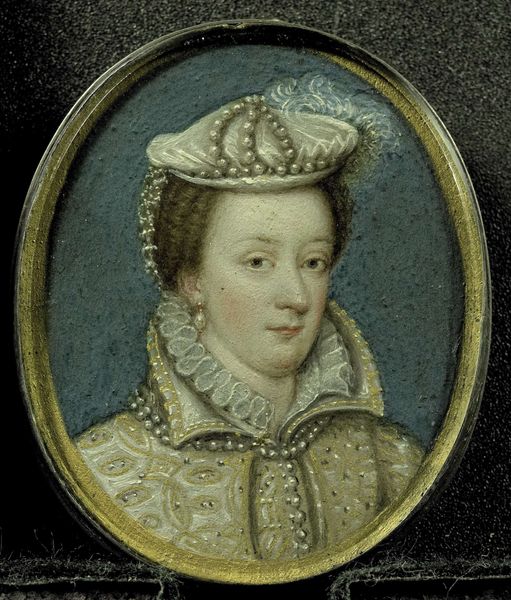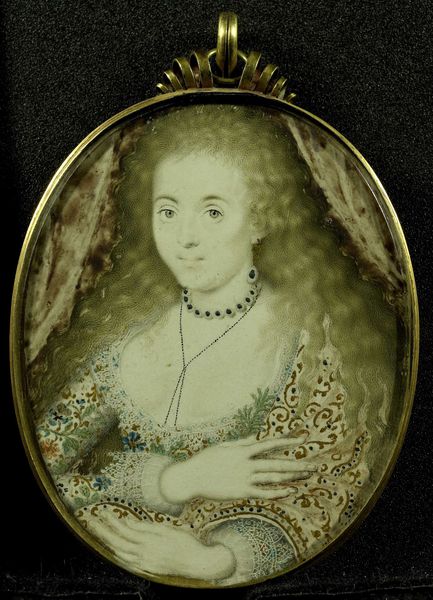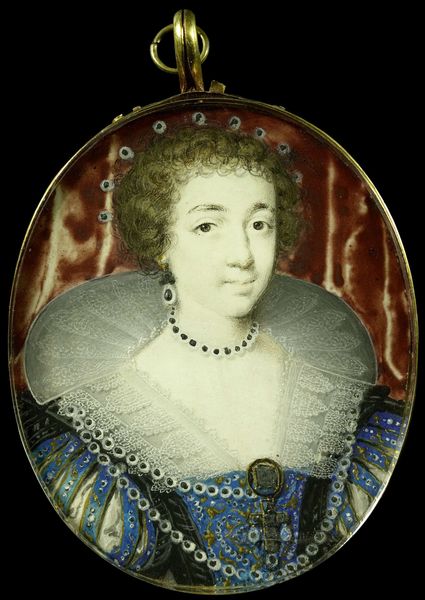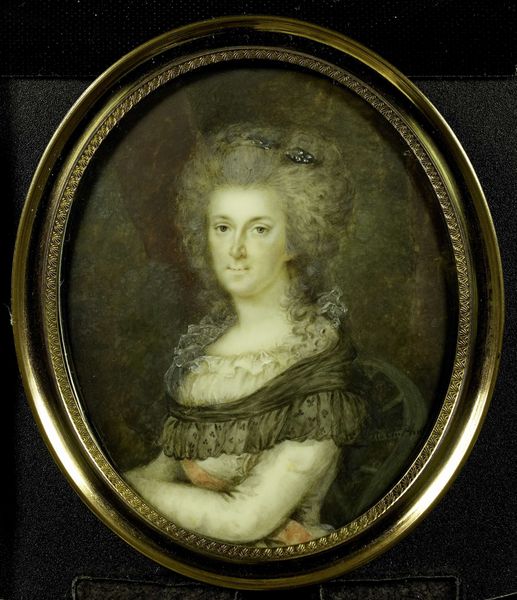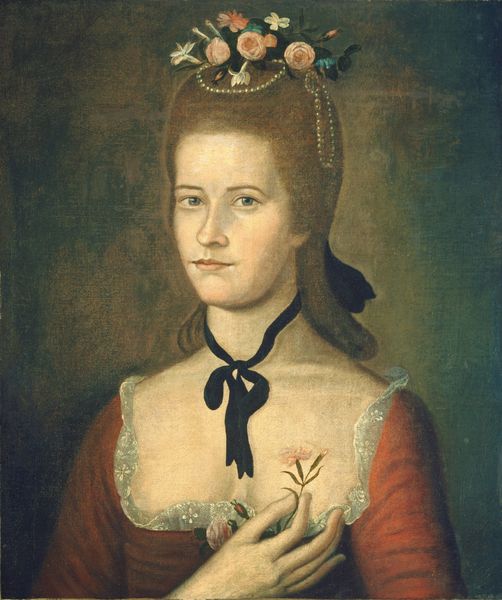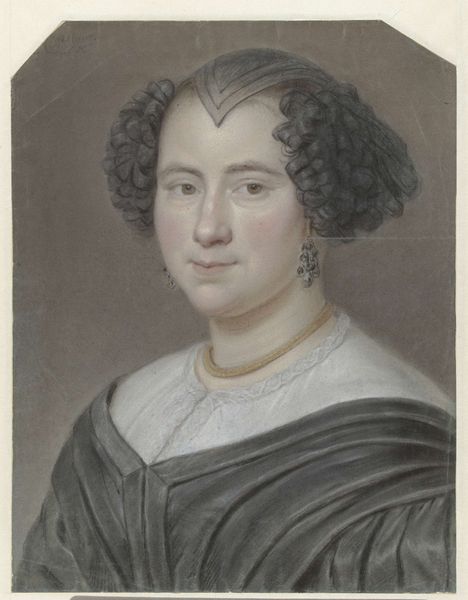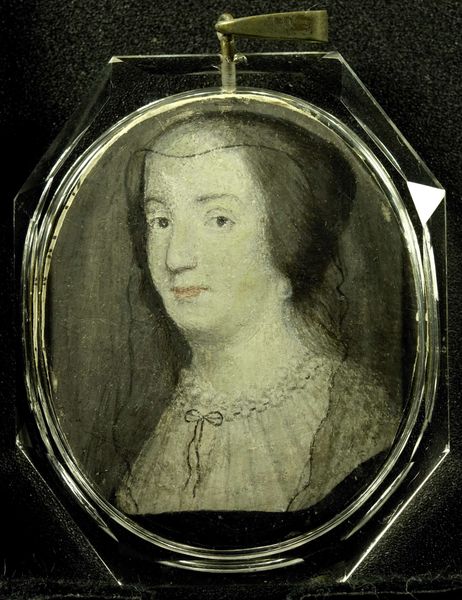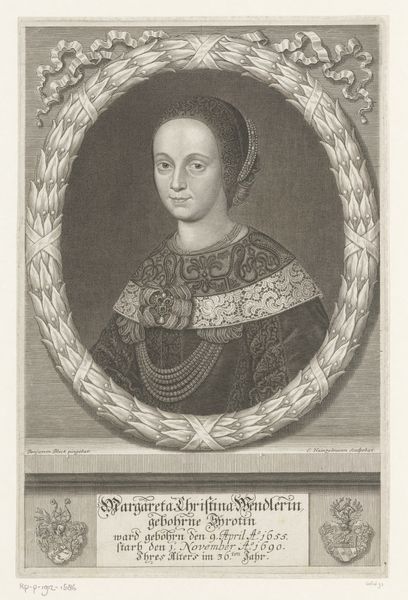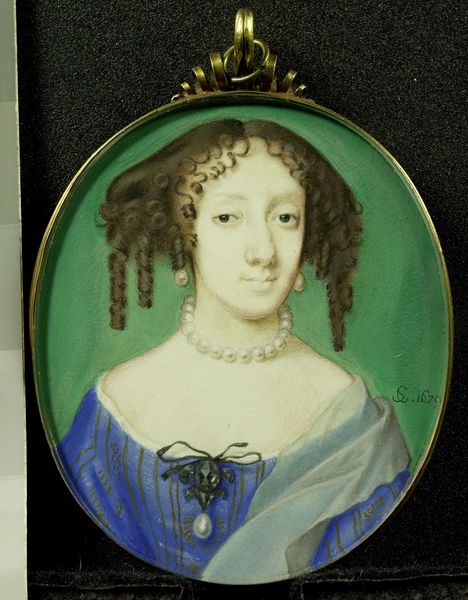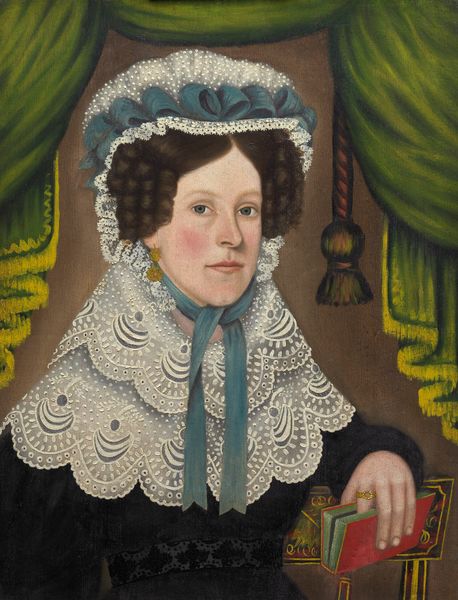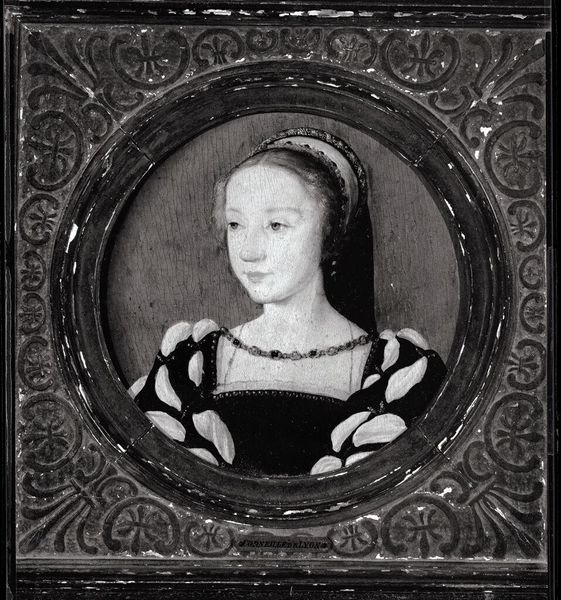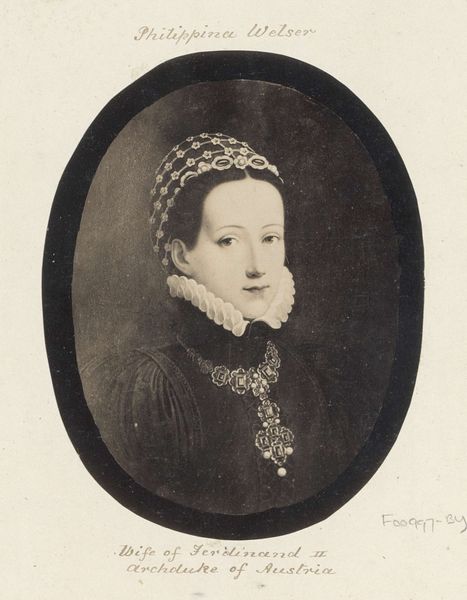
tempera, painting
#
portrait
#
tempera
#
painting
#
italian-renaissance
#
miniature
Dimensions: height 5.2 cm, width 4.1 cm, height 5.9 cm, width 4.6 cm, depth 0.6 cm
Copyright: Rijks Museum: Open Domain
Isaac Oliver painted this portrait of a woman in the late 16th or early 17th century, capturing her likeness in delicate watercolor on vellum. The elaborate lace ruff encircling her face immediately catches the eye. This isn't merely a fashion statement. Lace, from antiquity to the Renaissance, symbolized wealth, status, and the meticulous art of creation. Think of ancient Crete, where lacework suggested divine craftsmanship. This ostentatious ruff echoes similar neck adornments found in Flemish portraits, where the stiff, circular form almost becomes a halo, elevating the sitter. Consider the circular motif itself. It’s a form that recurs throughout art history as an emblem of eternity, perfection, and enclosure. The circle protects, but it also confines. The woman is framed by this, gazing out, perhaps hinting at a tension between her societal role and inner self. The circular form represents a powerful symbol that has been adopted and adapted across cultures and eras, continuously resurfacing in new contexts.
Comments
No comments
Be the first to comment and join the conversation on the ultimate creative platform.
